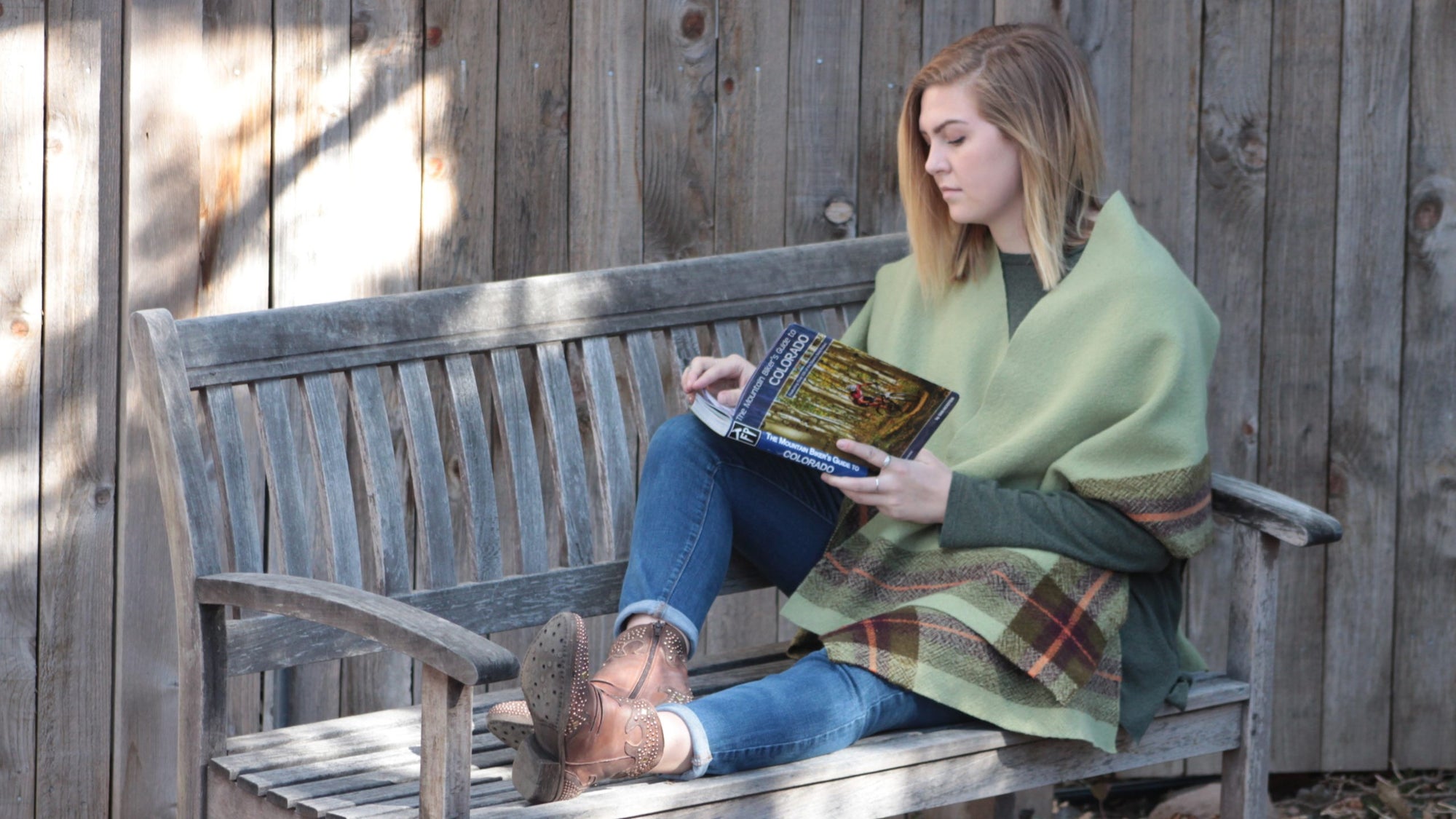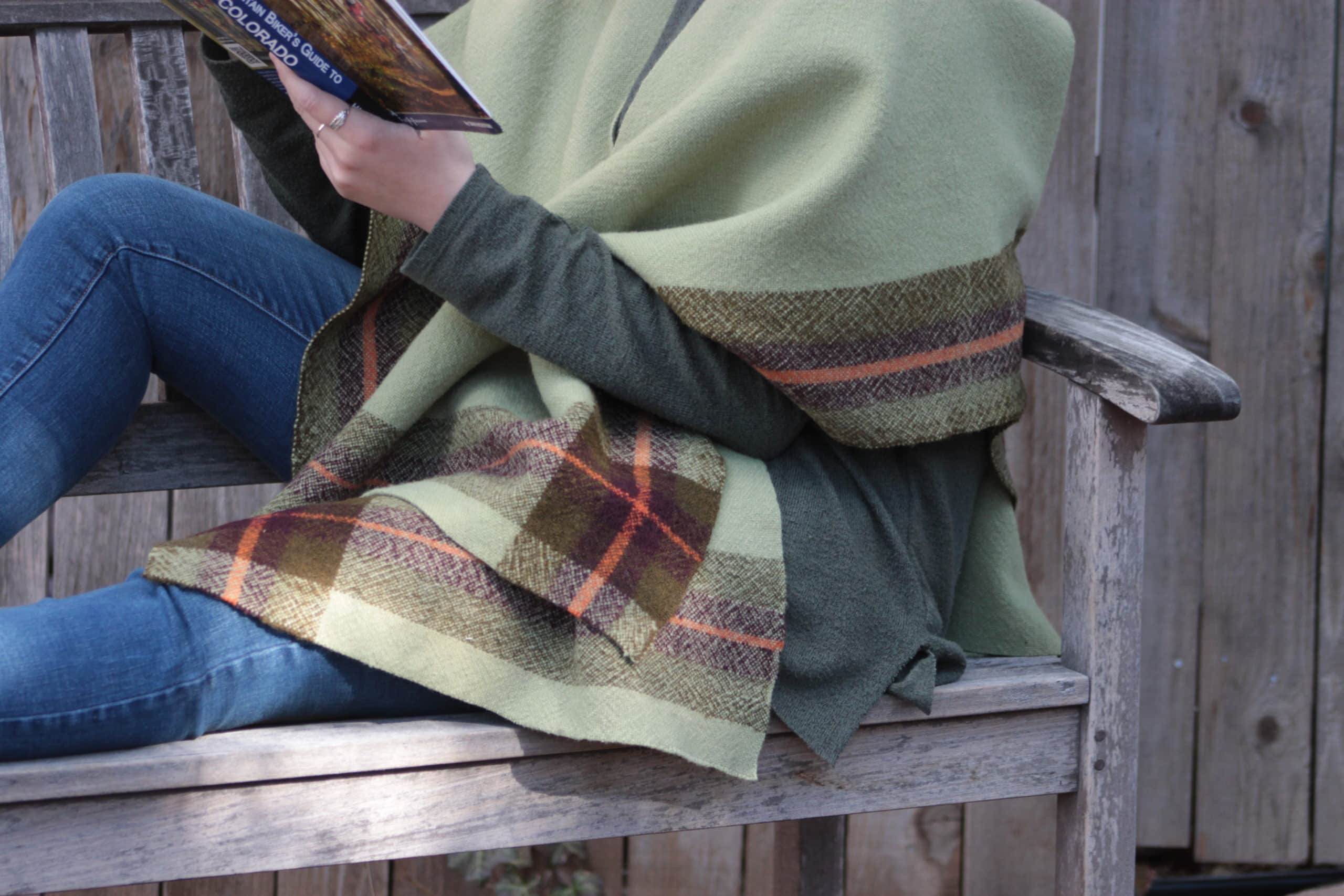Warping
Warp Color Plan: 24 ends of Wood Moss, 12 ends of Spiced Berry, 6 ends French Clay, 12 ends Spiced Berry, 24 ends Wood Moss, 224 ends of Bamboo.
For shaft looms, thread 1-2-3-4-repeat. Tie-up for plain weave is 1-3 (a), 2-4 (b). Treadling sequence is a, b, repeat.
Weaving
- Weave 30 picks Bamboo, 24 picks Wood Moss, 12 picks Spiced Berry, 6 picks French Clay, 12 picks Spiced Berry, 24 picks Wood Moss.
- Weave with Bamboo until you are about 6" from the end of the weave-able warp.
- Weave a border to match: 24 picks Wood Moss, 12 picks Spiced Berry, 6 picks French Clay, 12 picks Spiced Berry, 24 picks Wood Moss, 30 picks Bamboo.
Assembly and Finishing
After removing the cloth from the loom, I used my sewing machine to stitch along the raw edges of the fabric. I then trimmed the loom waste. You could consider a fringed edge if you’d like a bit of embellishment. If so, this stitching may not be necessary, but you should secure your fringe prior to washing. Save your thrums if you want to add extra fringe.
Fold your cloth in half lengthwise to find the mid-point and mark with a pin at each edge, then machine stitch across the fabric just above and just below the pins to create a cutting channel. You can now safely cut your fabric in half between the two lines of stitching, which will keep your newly-cut edges secure.
Now it’s time to do a bit of sewing. I used thread, but you could also use leftover yarn. Butt the two pieces of fabric together, right sides facing. Determine which edge will be the back of your cape, and hand stitch the edges together to create the back seam. I sewed together about 1/3 of the length of the fabric, but you should sew as much as you need to create a back that fits you just right. I did a bit of extra stitching to reinforce the top of the seam, as it will get pulled at a bit as you wear your cape. That’s it! Now to the washing machine (or not)!
Please consider this more drastic step optional. I wanted a slightly denser fabric, but if you are happy with what you have, a gentle hand washing and air-drying is fine. Skipping the fulling process might be a good idea if you don’t want your fabric dimensions to shrink too much. My fabric shrank about 25% lengthwise and 20% widthwise after a run through the washing machine and dryer.
I have a front-loading machine, and I washed my cape on a regular warm setting. This was followed by a full cycle in the dryer. However, I recommend keeping an eye on your cape throughout the process, checking often. I found that this particular yarn fulls slowly at this sett. I was pleased with the end result after one run through the washer and one through the dryer.
After washing and drying, I re-cut the edges to create a clean line (the fulling should keep your threads in place). I happen to like raw edges aesthetically, and I like how the flow of fabric feels uninterrupted. You could hem your fabric either before or after washing if you like a more tailored edge, or if you decide not to full your fabric and are worried about the edges fraying.
That’s it! Now fix yourself a cup of tea, pop on your blanket cape, and bid farewell to the winter chills. Happy Weaving!


